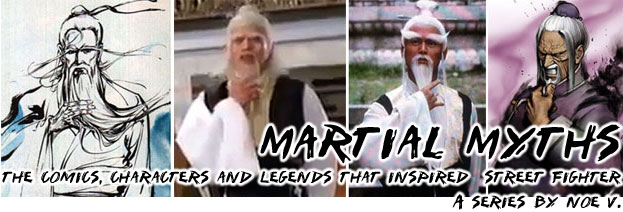
In adventure stories there was usually a great warrior or even king that had exceptional martial prowess. What made them important were the qualities that they demonstrated to audiences. These heroes were brave, kind, clever and acted as a moral compass for a society that had lost its way. In the adventure traditions there were usually villains that were morally opposite of everything the hero stood for. What made these villains scary was that they usually had far more martial prowess than the heroes and were willing to kill. In wuxia legends the heroes and villains mainly fought with their hands and occasionally a weapon. These archetypes followed the classic traditions, powers and origin stories.
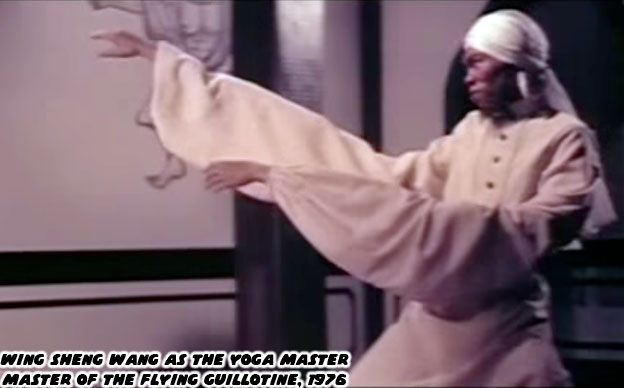
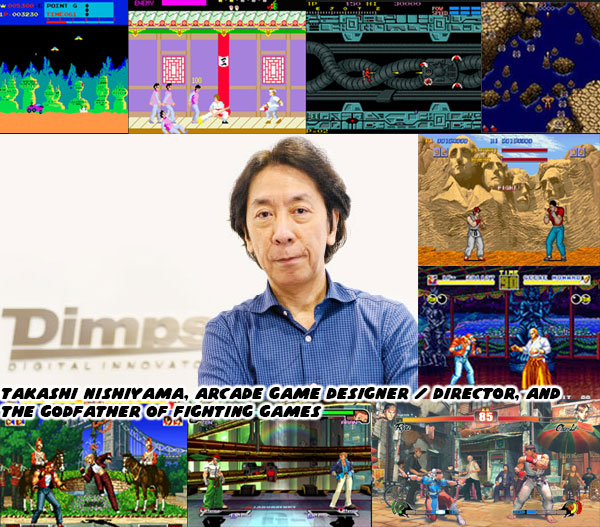
As the Street Fighter universe was fleshed out through the 1990's the traditions of wuxia were used to make the characters more interesting and plot more dramatic. Ken and Ryu were the introduction to the universe. At first gamers did not know much about the characters, how they got such awesome powers or what they were fighting for. The designers at Capcom had actually been fleshing out the characters well before the first manga was ever published.
"I wanted to add depth with a story. It just happened to be a fighting game, but I wanted there to be a story so it would feel like a movie. We even conceptualized details for the characters that we didn't put in the game itself -- what the characters might like to eat, do they have sisters, other family members, etc. Street Fighter was different from prior games in the amount of depth we gave the characters." - Takashi Nishiyama, the designer of the original Street Fighter.
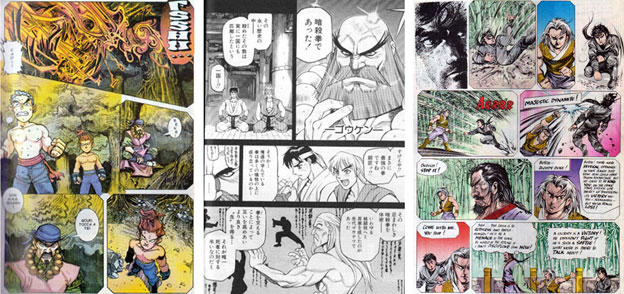
As the universe was explored in manga and animé the classic themes began coming up. Ken and Ryu were part of a martial arts tradition. Their master was named Gouken, he along with his brother Gouki were taught by a kung-fu master named Goutetsu. It was not karate as many fans of the series had assumed. The main characters were learning but a form of Antsasuken, or an "assassins fist." Goutetsu brought this over from China and had distilled the most lethal techniques into an unstoppable fighting art. In manhua the setup was very familiar. Two gifted youngsters, raised as brothers would be trained, one with a level head and another more impulsive. The more impulsive one would tend to get himself in trouble with the master and disobey orders. In the Iron Marshall the master was Tienway Champ, the level-headed youngster was Iron and the impulsive one was his adopted brother Duke.
In order to create dramatic tension there had to be a terrible accident or a murder witnessed by the young students. In the Street Fighter mythos it was Gouki that assassinated his master. His brother was a witness to this terrible crime. Years later Gouki assassinated Gouken while Ken and Ryu were witnesses. Iron ran in on the assassination of Tienway by Duke. These things left the characters with emotional and in the case of Iron, physical scars. The tragic events galvanized the heroes' resolve and put them on a path toward revenge. This was difficult for the young martial artists to accomplish now that they were masterless. In order to become better fighters they must seek out new challenges and learn the difficult lessons without the aid of a mentor.
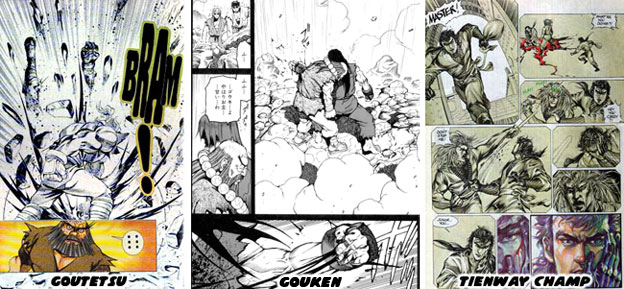
Similar tragedies were the origin stories for Western heroes like Batman, Spider-Man and Superman. It was a great plot device which helped hook the reader and made the hero sympathetic.
In the wuxia tradition, if a fighter was lucky they came across another master who was willing to teach them new techniques. More often than not however the fighter had to learn by teaching themselves. They had to fight masters of every style and learn how to defeat that style along the way. This made for great adventure writing, and a chance to explore the various martial arts schools. However for the sake of a self-contained story rather than adventure serial the fighter had to come across a new master.
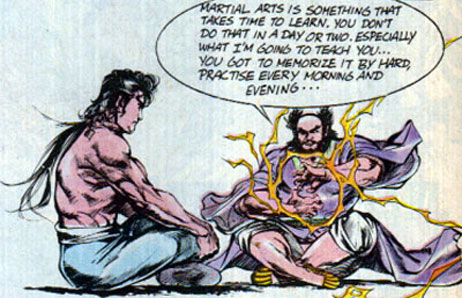
The heroes of the stories were usually gifted fighters to begin with. They knew all the techniques and secrets of their original master and could quickly build onto these things in a relatively short amount of time. This helped speed up the plot and allowed audiences not to have to sit through months of training and humbling lessons.
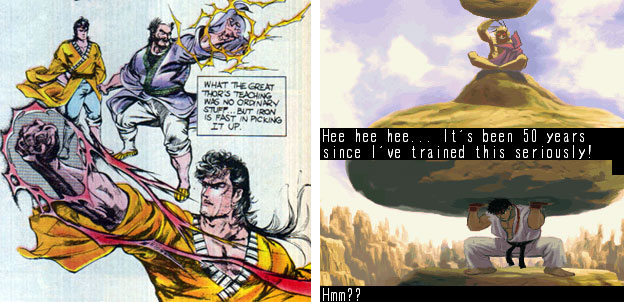
Years after the death of Tienway Champ, and hot on the pursuit of the Bloody Duke, the Iron Marshal was aided by a hermit named the Great Thor. He promised to teach Iron his trademark Thunder techniques. These techniques could take a great fighter decades to master but Iron picked them up at a rapid pace. Similarly the SF games allowed for both classic wuxia traditions to be explored over the course of multiple games. Characters had new or more powerful moves and those techniques did not have to be explained, players assumed that they were becoming better fighters as the years went by. Story-wise Ken and Ryu travelled the world looking for challenges and becoming stronger fighters in the first two SF games. By SF III it seemed that the characters had reached their potential and could fight Gouki. At this point in the story the elderly fighter Oro decided to take Ryu under his tutelage. It seemed that the young master still could become more powerful and thus fill an even greater presence in the universe.
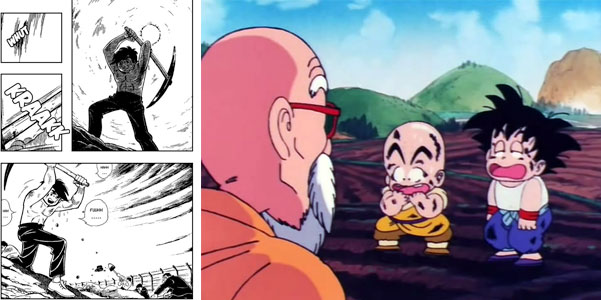
The manga and manhua stories would often take an aside to show the characters becoming stronger by highlighting the training regiments they endured. It was supposed to be inspiring but almost sad to see how characters had to suffer during these periods. Characters could sometimes be degraded and tortured just to become marginally better. Perhaps the writer and artists of the stories were a bit sadistic but in actuality were reinforcing the understanding that mastery of the martial arts required constant hard work. The end result would be worth all the struggles especially when revenge was involved (think of how Beatrix suffered under the cruel tutelage of Pai Mei in the Kill Bill movies).
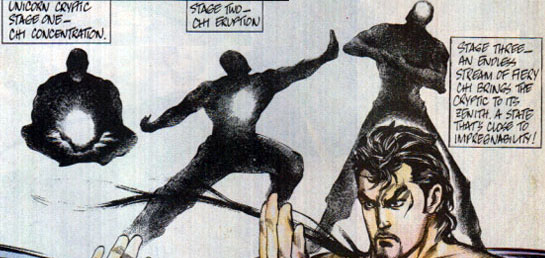
These characters often learned secretive techniques known only to a handful of people. In many cases it was only the master and the one or two disciples that were privy to the ancient techniques. This exclusivity made the heroes and villains unique. They could do things that regular people, or masters of the traditional fighting arts could not do. The trust that the masters had in their pupils had to be absolute. There was often a danger associated with teaching these techniques to inexperienced or corruptible students. In the SF canon Gouken was once infuriated with Ryu with the nonchalance that he put behind the techniques. In one story Ryu recalled the first time he performed a variation of the Shoryuken, or rising dragon fist. Ryu had split a boulder with the punch to which Ken was bragging about what a powerful fighter Ryu was becoming. Instead of being pleased with his disciples Gouken was infuriated, he struck down Ryu. The two were being shown extremely dangerous moves, some were techniques that were not used for fighting but instead for killing, the fact that they did not treat the moves with more reverence had caused Gouken to react the way he did. Ryu recalled this lesson as he was on the verge of defeat at the hands of Sagat following their first encounter.
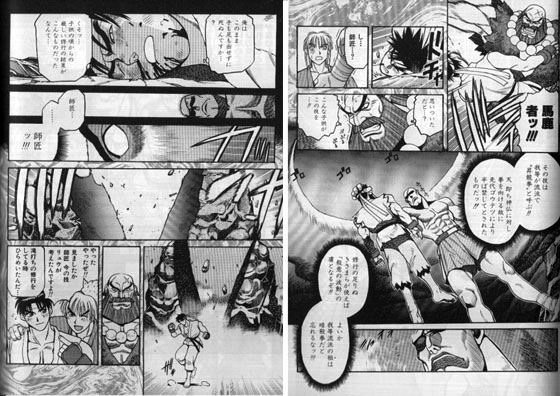
Ryu staged a miraculous comeback against Sagat thus becoming the greatest fighter in the world. This story became the stuff of legend in SF canon. It highlighted how a perfect technique could topple even the most powerful fighter in the world. When Masahiko Nakahira revisited the fight in the Street Fighter Zero manga he took a closer look at what was driving Ryu and it was neither brave nor honorable.
Ryu exploited that same killing technique he used to split the boulder on Sagat. The Metsu Shoryuken or "Destroying Rising Dragon Fist" was supposed to be a killing blow. If Sagat were not equally powerful then he surely would have been killed by the punch. The encounter had repercussions in the continuity of the universe. Gouken was trying to convey the gravity of the moves his pupils were learning. They should be taken in all earnestness and never used casually in a fight. Ryu could have accepted defeat and acknowledged that Sagat was a better fighter when they first met. It would have been his pride that would have suffered the most. He could have returned to fight Sagat in the future, older wiser and stronger. Instead Ryu gave into the temptation of exploiting the most powerful strike even if it would have turned him into a murderer. This made for a much more interesting story, especially for a jumping off point as the sequel had developed. Sagat returned as a boss character but had a grisly scar across his chest.
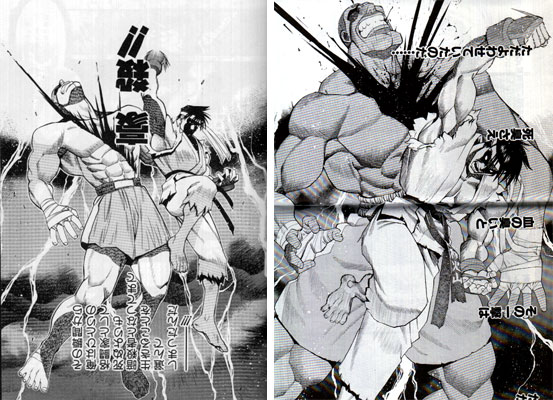
A shortcut to winning battles was not what Gouken was protecting his students from. By going for the lethal arts Ryu had exposed himself to the corrupting influences of techniques based in dark hadou, or evil chi. The philosophy is similar to the "dark force" from Star Wars mythology.
Again, to use an example of turning to darkness here was another quote from the Star Wars series.
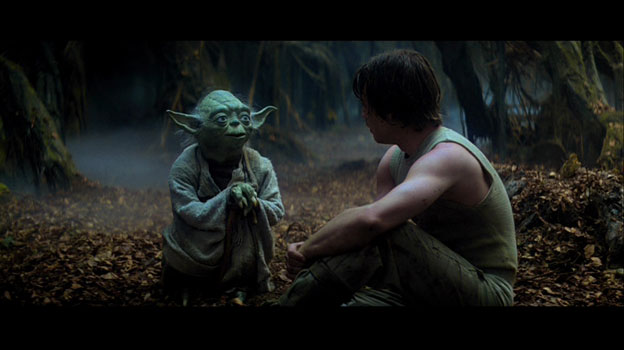
Yoda: Yes, run! Yes, a Jedi's strength flows from the Force. But beware of the dark side. Anger, fear, aggression; the dark side of the Force are they. Easily they flow, quick to join you in a fight. If once you start down the dark path, forever will it dominate your destiny, consume you it will, as it did Obi-Wan's apprentice.
Luke: Vader… Is the dark side stronger?
Yoda: No, no, no. Quicker, easier, more seductive.
Luke: But how am I to know the good side from the bad?
Yoda: You will know... when you are calm, at peace, passive. A Jedi uses the Force for knowledge and defense, NEVER for attack.
Luke: But tell my why I can't...
Yoda: No, no! There is no "why".
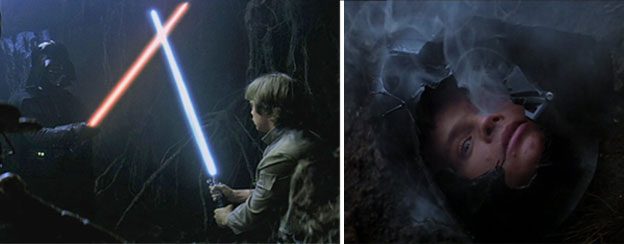
Once a person set toward the path to the dark side it was all but impossible to find the path back. In doing so the hero would become exactly like the villain. For Star Wars Luke would symbolically become Vader. In Street Fighter Ryu would become Gouki. In wuxia traditions there was good and evil chi as well. The meridians in the body cycled through energy that could grant strength or heal. If a person succumbed to evil then they generated dark chi. This energy was poisonous and could grant practitioners tremendous strength but could also turn them into monsters. Tapping into this power could make a hero as powerful in a villain, but by doing so the hero could become just as reviled as the villain.
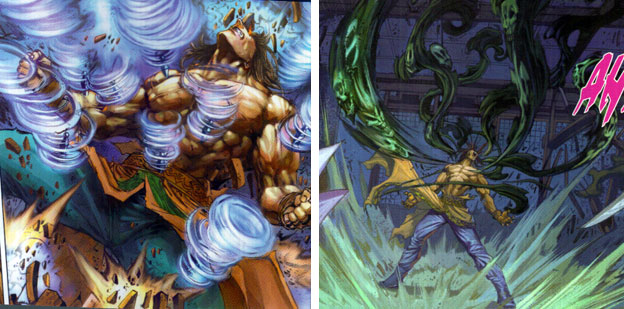
The martial arts myth did a good job at exploring the variables in the revenge plot. If a main character succumbed to darkness then they could become very powerful, but the cost of that is the humanity of the fighter. Getting revenge on an assassin by becoming a murder undid the purpose of the hero. It was the classic "two wrongs do not make a right" or "an eye for an eye" parable that was being explored in wuxia. The temptation to steer away from the honorable and righteous path was a constant in literary form. The hero was defined by being able to overcome strife and adversity without succumbing to temptation. In the SF mythos Ryu had to face the challenges of his own dark side. This storyline was explored in the SF Zero / Alpha series.
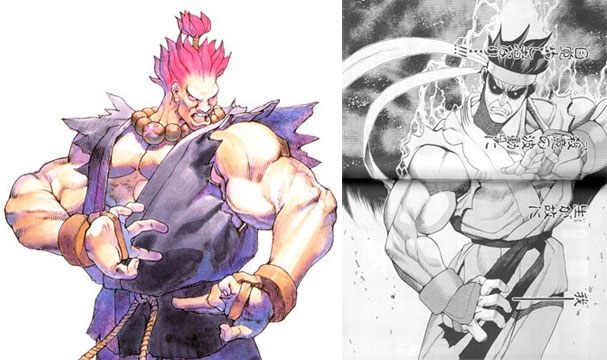
When a fighter became evil they traded in their humanity and compassion. The core of the martial arts was not learning how to fight, per-say, but how to defend from attacks. Even Shaolin Quan was created as a form of exercise to combat the fatigue of sitting for extended periods of time in meditation. It was also designed as a means for monks to fight off wild animals. The techniques and philosophies were designed to make a practitioner mentally stronger as well and make their spiritual cores healthier. In qigong this meant keeping the meridians clear and connected to the elements. By focusing on developing a higher consciousness the practitioners could see the importance of the fight, not to win or lose but to become examples of righteous living. By showing mercy to an opponent, even those who sought to fight for the wrong reasons, could often turn them into allies. This plot was explored in many wuxia legends and even contemporary Hong Kong films.
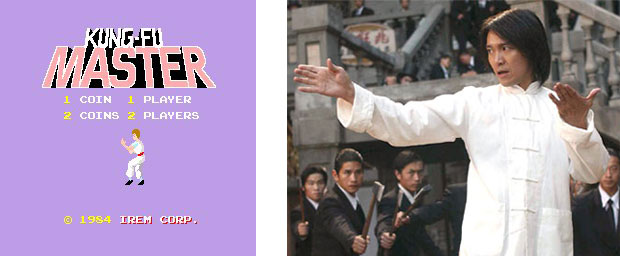
In the classic martial arts the lethal strikes were called the dim mak. These were death touches or death punches delivered to vital organs, or major meridians. The five point palm exploding heart technique from Kill Bill was an example of a dim mak, the metsu shoryuken was another. In manhua and manga the dim mak was often delivered in a spectacular fashion. Kenshiro from Hokuto no Ken for example punched villains in their pressure points and then walked away exclaiming that they were already dead. When a villain did this it had to be delivered more brutally. They wanted their opponent not only to die, but to suffer in death as well. In the Iron Marshal, the Bloody Duke performed a dim mak to the chest of a fighter named Elephant. This punch crushed Elephant's heart and went clean through his torso.

In the SF series the final punch of Gouki's Shun Goku Satsu aka "Instant Hell Murder" traveled through the opponent. He was not the only character to possess this technique in canon. Those that could perform moves like that were evil characters, such as Evil Ryu, Dark Hokuto and her brother Kairi from Street Fighter EX. What made the move awe-inspiring in the comic format was that the technique exploded in the shape of kanji, or traditional calligraphic characters. Street Fighter fanatics might be surprised to learn that this had been done years before SF in manhua tales like the Iron Marshal. The Bloody Duke did not only cause a heart to explode into a single character, he actually wrote out a challenge to the Emperor in blood, using punches and sword strikes on his opponents.
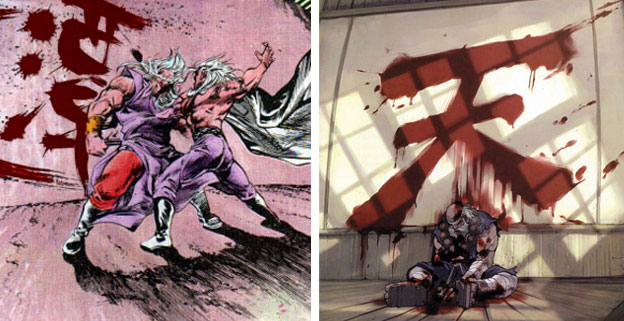
These techniques were exploited by the villains in wuxia epics to strike fear into the hearts of opponents. However what it did to the practitioner of the dark arts was even worse. This was the cautionary tale that went back thousands of years. It was shared by every culture around the world in poetry, spoken word, comic book, and film. As summed up by the character Harvey Dent aka Two Face in the 2008 film The Dark Knight; “You Either Die A Hero, Or You Live Long Enough To See Yourself Become The Villain.” Were there any hero origins, major villains, or cautionary tales that you grew up with? I'd like to hear about it in the comments section please. As always if you would like to sponsor me please visit my Patreon page and consider donating each month, even as little as $1 would help make better blogs and even podcasts!

No comments:
Post a Comment